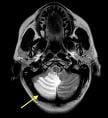
September 30, 2009 - The Society of Interventional Radiology presents Catheter Lysis of Thromboembolic Stroke (CLOTS) — an intensive five-day course featuring top interventional radiologists, neurointerventionists, neurologists and neuroradiologists offering doctors the opportunity to gain and/or upgrade skills to incorporate acute ischemic stroke care into their practice.
The course, to be held Dec. 6 - 10, 2009, in Dallas, Texas, incorporates lectures, panel discussions, teaching files, case scenarios and hands-on interaction with flow models. It is designed specifically for doctors with Accreditation Council for Graduate Medical Education training and experience in neuroimaging, catheter-directed cerebral angiography and subselective endovascular catheter-directed therapy. The course will be useful for well-trained specialists, including interventional radiologists, neuroradiologists, neurointerventionists, body interventionalists and—in particular—interventional radiology and neurointerventional fellows.
“The Society of Interventional Radiology has assembled a large group of stroke experts to teach the medical management of stroke patients, cerebral imaging, interventional techniques of revascularization and the stroke team concept,” said Carl M. Black, M.D., an interventional radiologist/neuroradiologist at Utah Valley Regional Medical Center in Provo. Many topics will be covered including the pathophysiology of ischemic stroke, neurological examination/NIH stroke scale, extensive aspects of neuroimaging, screening for stroke, stroke risk factor management, patient selection (imaging criteria), drugs used in interventional therapy, the nuts and bolts of setting up a stroke center and the role and timing of rehabilitation, said Black.
After completing the course, attendees should be able to describe the recent developments in acute stroke therapy and interventions, discuss essential elements of multidisciplinary stroke team development, analyze imaging modalities used in evaluation of acute ischemic stroke, describe intra-arterial techniques for treatment of acute ischemic stroke and demonstrate knowledge of guide catheters, microcatheters, pharmaceuticals and infusion systems. Participants will review teaching cases that will be posted on the SIR Web site, and attendees will have the opportunity to take written and practical exams on completion of this course to assess knowledge of basic principles that were covered.
Besides Black, CLOTS program coordinators include Kieran J. Murphy, M.D., FSIR, interventional neuroradiology, University of Toronto, Canada; John W. Cole, M.D., M.S., vascular neurology, University of Maryland School of Medicine, Baltimore; and David Sacks, M.D., FSIR, interventional radiology, Reading Hospital and Medical Center, West Reading, Pa.
Steering Committee members include J.J. “Buddy” Connors, M.D., FSIR, interventional neuroradiology, Vanderbilt University Medical Center, Nashville, Tenn.; Rishi Gupta, M.D., interventional neurology, Cleveland Clinic, Cleveland, Ohio; Howard A. Rowley, M.D., neuroradiology/neurology, University of Wisconsin, Madison, and secretary of the American Society of Neuroradiology; M.J. “Bernie” Stallmeyer, M.D., Ph.D., interventional neuroradiology, Our Lady of Lourdes Regional Medical Center, Lafayette, La.; and Joan Wojak, M.D., interventional neuroradiology, Our Lady of Lourdes Regional Medical Center, Lafayette, La.
For more information: www.SIRweb.org/CLOTS


 December 10, 2025
December 10, 2025 









